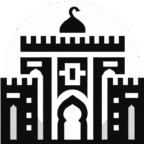Nestled in the Rif Mountains, Chefchaouen has long captured the hearts of visitors, particularly American tourists. This article explores its rich history, geographic importance, and enduring political and tourist significance, making it a must-see destination in Morocco.
Chefchaouen Through the Ages: A Historical Overview
Chefchaouen, often referred to as the “Blue Pearl of Morocco,” was founded in 1471 as a fortress to fend off Portuguese invasions. Its deep history traces back to its role as a defensive post during the rise of Islam in North Africa. Over the centuries, Chefchaouen has been a crossroads of civilizations, marked by waves of Berber, Arab, and Jewish populations. This cultural blend is seen today in the city’s architecture and traditions, which appeal to tourists seeking an authentic Moroccan experience.
American travelers are particularly drawn to Chefchaouen’s unique character and history, giving it an unmatched appeal as a destination with both ancient roots and modern attractions.
The Geographical Significance of Chefchaouen
Located in the northern part of Morocco, Chefchaouen’s strategic location between the Mediterranean Sea and the Rif Mountains makes it an ideal hub for both local and international travelers. The city’s mountainous surroundings offer breathtaking views and opportunities for outdoor activities, attracting nature lovers from all over the world, especially those from the U.S. who seek adventure and cultural immersion.
The city’s remote yet accessible location has historically made it an important trade route, connecting Morocco’s coastal and inland regions. Today, Chefchaouen continues to play a vital role in promoting sustainable tourism, preserving its natural environment while offering a serene escape from more crowded Moroccan cities.
Chefchaouen’s Political and Tourist Importance
Chefchaouen is not just a tourist hotspot; it also holds political significance. During the 1920s, the city became a center of resistance against Spanish colonization, serving as a refuge for Berber tribes. Its long-standing political relevance has shaped its identity, making it a symbol of Moroccan resilience.
In the modern era, Chefchaouen has become synonymous with eco-tourism and cultural preservation. The city’s local government has placed significant emphasis on maintaining its historical sites and promoting responsible tourism practices. These efforts resonate with American tourists who value sustainable travel experiences and wish to engage with a destination that respects its heritage.
Why Chefchaouen Appeals to American Tourists
The allure of Chefchaouen for American tourists is multifaceted. The city’s striking blue-washed streets and buildings create a visually stunning environment that contrasts with its rugged natural surroundings. For many U.S. visitors, Chefchaouen offers a peaceful, authentic Moroccan experience that is less commercialized compared to larger cities like Marrakesh or Casablanca.
Beyond its aesthetic beauty, Chefchaouen is also a gateway for exploring Moroccan culture and history in an intimate setting. American travelers appreciate the city’s blend of history, culture, and natural beauty, with opportunities for hiking, shopping for local crafts, and enjoying traditional Moroccan cuisine.
Chefchaouen’s Role in Morocco’s Tourism Industry
Chefchaouen’s tourism has grown exponentially in recent years, with a significant increase in American visitors. The city is part of Morocco’s broader strategy to develop sustainable tourism, emphasizing eco-friendly practices and cultural conservation. Chefchaouen’s appeal lies in its ability to offer an immersive, yet relaxed, experience that aligns with the desires of modern tourists, especially those from the U.S.
The government’s investments in infrastructure and tourism services have bolstered Chefchaouen’s standing as a must-visit destination. With its proximity to other major Moroccan cities and the growing popularity of regional travel, Chefchaouen continues to thrive as a vital part of Morocco’s tourism economy.
Chefchaouen: A Must-Visit Destination for American Tourists
For American tourists, Chefchaouen is more than just a photo opportunity—it’s a destination that offers rich cultural experiences. Whether exploring the historical Kasbah, hiking in the Rif Mountains, or enjoying the local artisanal markets, visitors from the U.S. are sure to leave with a deeper appreciation of Morocco’s heritage.
Chefchaouen has solidified its place on the global tourism map, and for American travelers, it stands as a unique, off-the-beaten-path destination that combines history, nature, and Moroccan charm.
Sources and Further Reading:
- Moroccan National Tourist Office
- UNESCO World Heritage
- Lonely Planet: Chefchaouen Guide
- World Travel & Tourism Council

